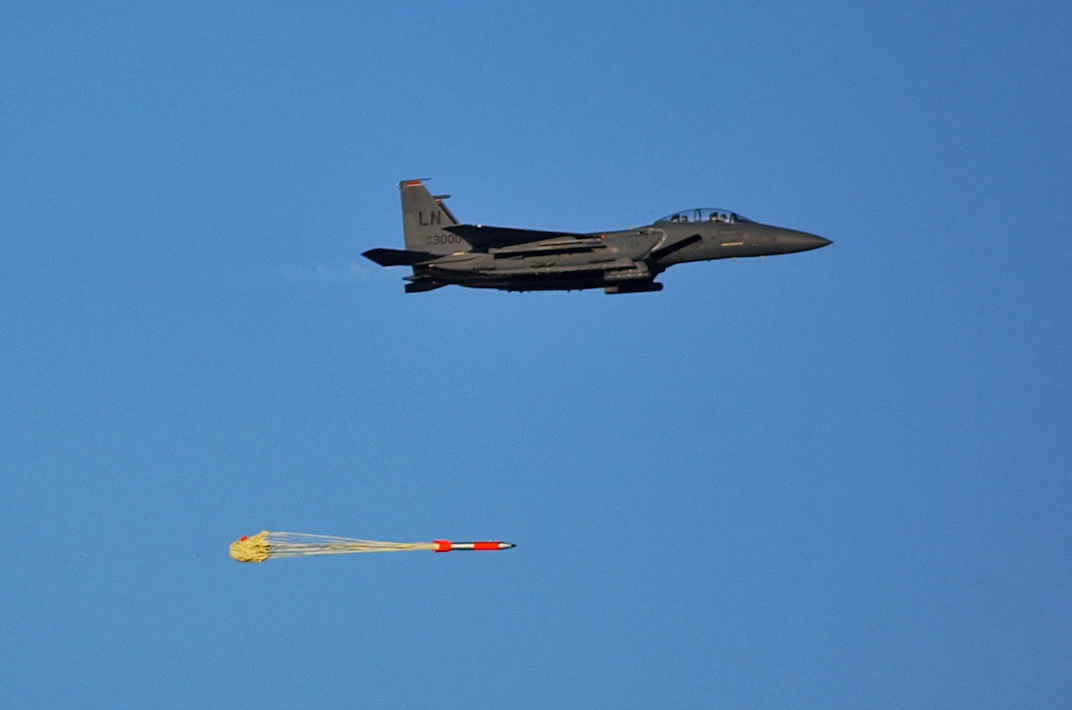
By Ling Yunzhi
US Politico magazine reported that the Pentagon is upgrading its nuclear arsenal in Europe by accelerating the deployment of the latest B61-12 nuclear bombs at several NATO bases. The tactical nuclear bombs were originally scheduled to be delivered next spring. Now they will be deployed to America’s air force bases in Europe in December 2022.
A US $10 billion budget has been allocated to replace the old B61-11 tactical nuclear weapons with the latest B61-12, which is America’s most costly nuclear arsenal expansion program ever in Europe. The more precise B61-12 reflects America’s tendency to lower the threshold of using nuclear weapons with its capability to carry smaller nuclear warheads and an adjustable explosive yield between 300 and 50,000 tons.
In the middle of the ongoing Russia-Ukraine conflict, America’s accelerated upgrade of its nuclear arsenal in Europe is partly to deter Russia and placate the uneasy Europe, and partly to tighten the control over the continent at a time when nuclear risks are on the rise.
By storing nuclear weapons in Europe, the US aims to consolidate NATO’s central role in European defense affairs and consequently maintain its own discourse power and influence over Europe’s defense policy. Washington believes a NATO unarmed with nuclear weapons would seriously undermine its authority and ability to give orders around the world. That will not only destabilize its domination within NATO but also damage its interests worldwide.
Therefore, some American politicians and congress members have repeatedly emphasized the need for NATO to consider external threats when it develops its nuclear strategy, and to expand its scope of military strikes to well beyond its own boundary, thus turning the military bloc into a tool that can protect America’s interests around the globe. The US Department of Defense has put aside a special fund of US $30 billion out of the military budget for the fiscal year of 2023 for maintaining and upgrading the nuclear arsenal, including nuclear weapons in Europe. This fund is expected to grow in the future in order to further tighten the nuclear control over NATO and Europe.
The US has frequently taken other military actions in Europe than nuclear weapon reinforcement. On October 17, it initiated the Steadfast Noon nuclear deterrence exercise involving 14 NATO members, during which it dispatched droves of American warplanes to multiple bases across Europe, all close to the Russia-Ukraine battlefield. At the same time, 4,700 soldiers of the US 101st Airborne Division were sent to Romania, the first time this elite unit was dispatched to Europe in 80 years. This drove made the total number of American soldiers on this continent increase to nearly 10,000 as about 5,000 troops of the 82nd airborne division were already sent to south Poland when the Russia-Ukraine conflict first broke out. Besides, the USS George H.W. Bush aircraft carrier has arrived at the Mediterranean Sea while another carrier USS Gerald R. Ford has set off for Europe to enhance the military deployments there.
With the deepening of America’s “major country competition” strategy and the escalation of the US-Russia confrontation, upgrading the European nuclear arsenal when the future of the Russia-Ukraine conflict remains unclear is sure to stir up high vigilance and a strong reaction from Russia. Russian Deputy Minister of Foreign Affairs Alexander Grushko said publicly on October 29 that America’s accelerated deployment of new-type tactical nuclear weapons in Europe is a step to lower the nuclear threshold. Moscow will keep that in mind when making military deployments and plans in the future and will take all necessary countermeasures to ensure its national security. Tom Collina, director of policy at Ploughshares Fund, the largest foundation singularly focused on reducing the threat of nuclear weapons, warned that although America’s nuclear enhancement in Europe is more to support its European allies, the move may very likely exacerbate the situation to the point of triggering consequences out of expectation.
In fact, the reinforcement measures by the US may be opposed by some European countries as well. Deploying nuclear weapons in a region during wartime will surely equip it with the ability to launch nuclear attack, but that also makes it the prime target of being attacked, which is why many European countries are against America’s deployment of nuclear weapons in Europe and hope it would remove all such weapons. Germany in particular is extremely repulsive to the idea and compared America’s stationing of troops and deployment of nuclear weapons to the military occupation.
Moreover, judging by the growing uncertainties within Europe and the spread of international terrorism in recent years, the nuclear weapons stored by the US in Europe will become a labile factor prone to proliferation. The US should take all these into consideration.
(The author is a researcher at the Center for Asia-Pacific Development studies, Nanjing University)
Editor's note: Originally published on thepaper.cn, this article is translated from Chinese into English and edited by the China Military Online. The information and opinions in this article do not necessarily reflect the views of eng.chinamil.com.cn.













